Media | Articles
Junk in the Trunk: Auto history’s leading rear ends
This article first appeared on this site in July 2022. We’re resharing it now to solicit your input: Which automotive rear ends would you add to this list? Drop a comment below and let us know. Who knows, we might compile Part Two. —Ed.
Despite the proliferation of video chat and Zoom calls in recent history, the fundamentals of interpersonal communication involves face-to-face interaction. When it comes to automobiles, we aren’t all that different. Manufacturers tend to design them “from the front,” as people digest and judge a car’s face above all else.
Rare is the vehicle for which the rear-end styling receives equal or additional consideration. In some ways it isn’t sensible, given that we are constantly looking at the backside of every car in front of us while driving in traffic. With that in mind, we’ve hand-picked a slew of significant vehicles that treated the rear with as much visual weight as the front.
1948 Cadillac
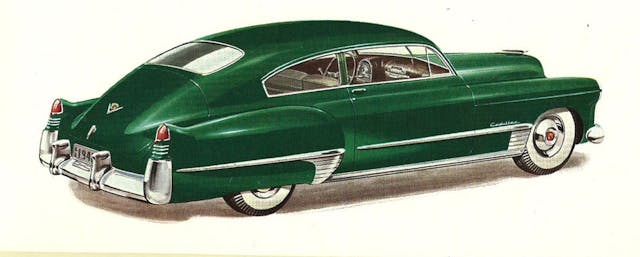
It may be difficult to believe, but Cadillac was not the top luxury brand in America before World War II. That would be Packard.
Cadillac slowly made its way toward overtaking Packard as America’s dominant luxury brand, starting in the late 1920s with compelling designs from Harley Earl and commensurately deft engineering innovations. By 1948, with styling cues copped from the twin booms of the P-38 Lockheed Lightning, Cadillac began a styling cue that would change how Americans (and the world) viewed personal transportation.
These humps (or lovely taillight lumps) were the genesis of what we’d later call “fins,” with the aeronautical influence evolving from airplanes to rockets as the 1950s progressed. Designer Bill Mitchell, a progenitor of this motif, later said, “From a design standpoint, the fins gave definition to the rear of the car for the first time. They made the back end as interesting as the front, and established a longstanding Cadillac-styling hallmark.” With the all-new high-compression V-8 for 1949, Cadillac arguably produced the first perfect American car of the postwar era and, by 1950, had overtaken Packard in the American automotive consciousness.
1957 Chrysler Corporation “Forward Look”
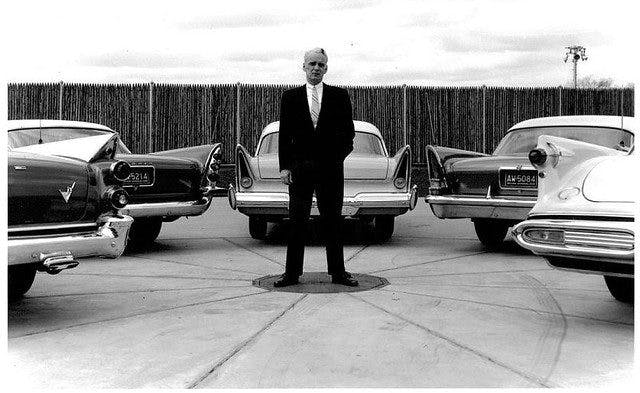
If 1955 was the year of the “Horsepower Race,” then 1957 certainly was the year of the fin. Notable protuberances had begun to appear in 1955 in some showrooms, but it wasn’t until 1957 that most manufacturers fully inhaled the waft of what Cadillac had been cooking. Out of all the brand offerings in 1957, it was Chrysler Corporation’s all-new “Forward Look” that asserted itself as the king of fins. From the front, they all looked like they were soaring; from the rear, they looked like they were ready to blast off.
Certainly there were many other reasons besides “Flight-Sweep” styling to appreciate the Forward Look: comfort, engineering, roadability, safety, and performance. In comparison to other brands, Forward Look designs appeared cohesive, as if they had high upswept rear fins from birth. All one has to do is compare a 1957 Plymouth with the evergreen Chevrolet (with fins that practically seemed like an afterthought) and there was no contest; the Chevy was headed to the drive-in while the Plymouth was headed to the moon. It wouldn’t be until 1959 that General Motors would have vehicles that rivaled the Chrysler Corporation in style, especially from behind.
1963 Chevrolet Corvette
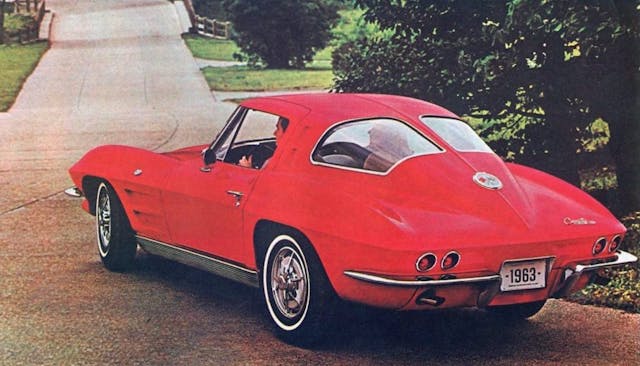
The Corvette always reflected among the best that General Motors had to offer in terms of styling in the 1950s, but when the second-generation “C2” debuted in the fall of 1962, mouths were agape. In particular, the bisected rear window on the ’63 became a controversial trademark but, even without it in years that followed, the rear view’s impact was as spectacular—if not more so—as the rest of the car. Underneath, an all-new independent rear suspension upped the sophistication quotient to a level for engineer and director of high performance, Zora Arkus-Duntov, to remark, “For the first time I now have a Corvette I can be proud to drive in Europe.”
The genesis of the 1963 Corvette comes from Bill Mitchell’s vision for an Italian-influenced sports car for Ed Cole’s Q-Chevrolet project. Peter Brock’s design for the Q-Corvette model won out, but the project never made it to production. All was not lost, however, as Larry Shinoda took inspiration from the Q-Corvette and came up with the 1959 Stingray Racer concept for Bill Mitchell. Thanks to critical acclaim and racing success (a highlight was winning the SCCA National Championship the following year), it became clear the Stingray Racer would determine styling cues for the C2. The rear design, influenced by the 1930s Bugatti Type 57SC Atlantic, pulled everything together to create one of the great postwar cars, especially from behind.
1971 Buick Riviera
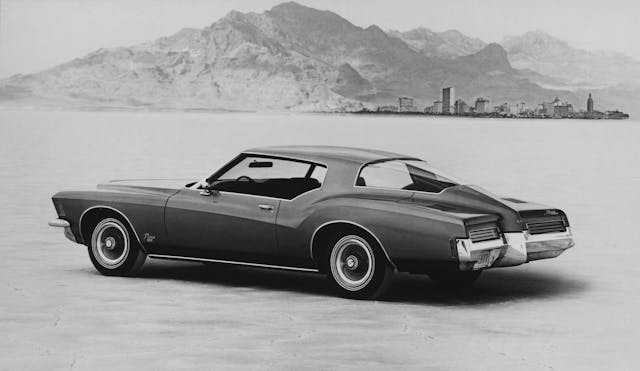
Notice a pattern here? Bill Mitchell brought back the Riviera’s verve for 1971 after losing its style leader status over the previous few model years. The new Riviera returned as an eye-catching chariot that featured inspired, neoclassical boattail styling, which was both distinctive and polarizing for some—even within Buick. General Manager Lee Mays publicly called it, “A classic new design that is a triumph of automotive styling,” but privately he said, “Sure, people liked it, some people like anything. I never could find anyone who admitted they designed it.”
Designer Jerry Hirschberg had a different take: “At first it was supposed to be on a [stretched, mid-size] A-body [platform, like a Grand Prix and Monte Carlo]. But then it was moved to the [full-size] B-body, and that didn’t help. On a smaller car, it could have been kind of interesting … the car looked slightly eccentric. But so would a Corvette if it were the size of a Cadillac.”
And from the horse’s mouth, Bill Mitchell said in retrospect that “What hurt the boattail was to widen it. It got so wide, a speedboat became a tugboat.” Such is the creative process but, to those of us who were not insiders, the 1971 Riviera represented style that had cast off any connection to the 1960s. Nowhere else was it better demonstrated than in the boattail rear. Perhaps the Riviera didn’t end up the way as intended, but its bodacious booty set the tone for the rest of the car.
***
Marketplace
Buy and sell classics with confidence
Check out the Hagerty Media homepage so you don’t miss a single story, or better yet, bookmark it. To get our best stories delivered right to your inbox, subscribe to our newsletters.



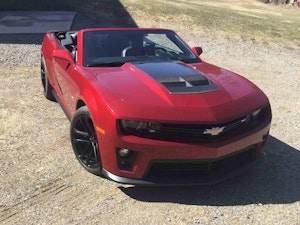











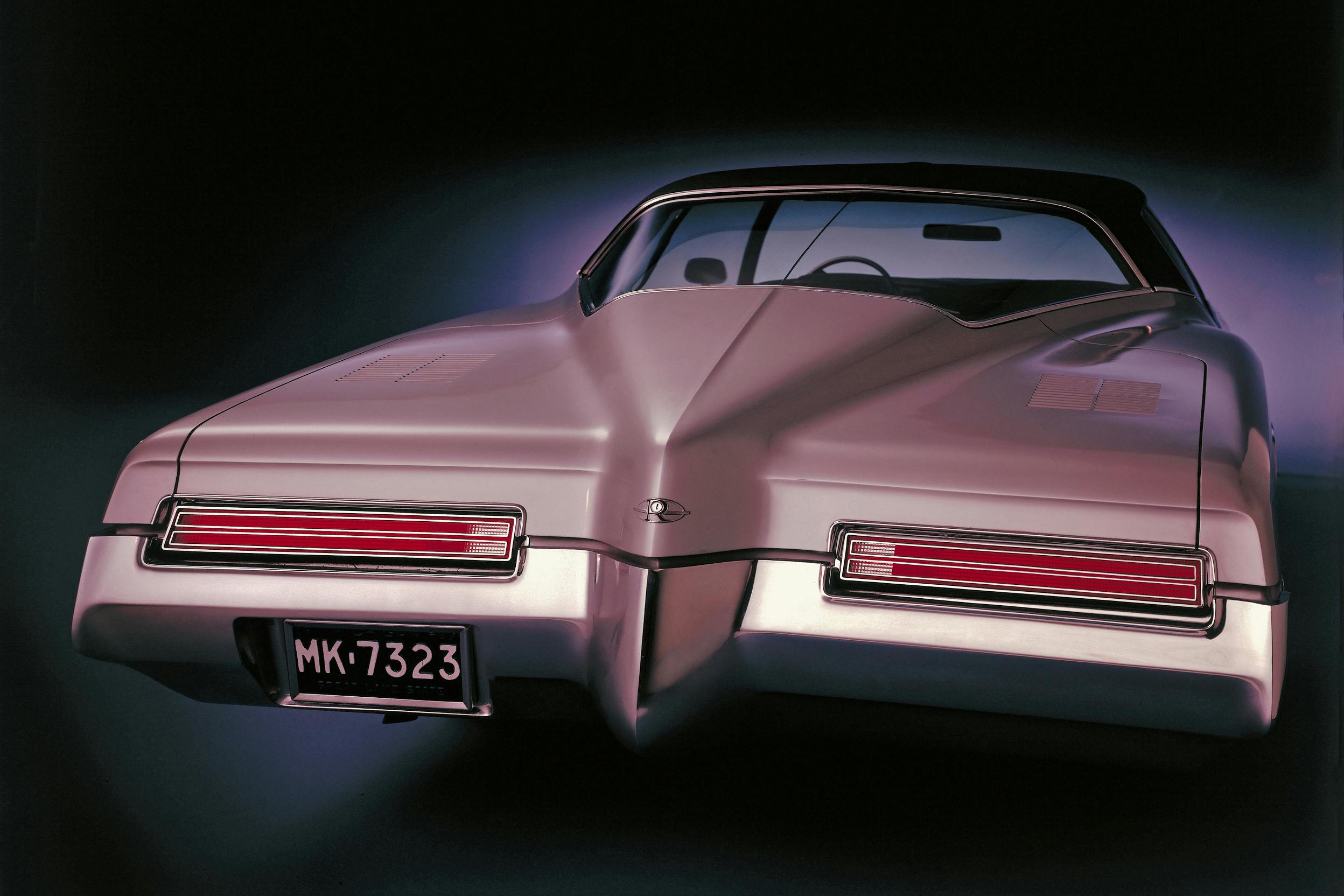
I certainly agree with the inclusion of the 63 Corvette Coupe, having had a couple and being a Corvette guy. The rear of a 57 Chevy Nomad is up there on my list. But, one you can leave off (remember, I’m a Corvette guy – old school) is the C8. Looks like a fat ass cartoon transformer.
Apparently the list is exclusive to American metal. How about something sexy from Porsche in 1955-57? Like the 550 Spyder?
I had a ’71 Riviera, and not a day would go by when someone wouldn’t comment on how cool it was. I wish I still had it, 8MPG and all.
The 63 C2 by all means is a beautiful site. I also am drawn to the 65 impala SS. The slant back and chrome with the six round protruding lights is another design winner. The color of the car defines the setup in different ways.
69,69 Buick Riviera GS for overall balance. Not a bad look from any angle!
The 1971 Buick Riviera is still one of my favorite “Rear Ends”. But I have a TVR, Devin and a Berkeley. ….Jim.
1957 Oldsmobile Super 88! Tri-glass split rear window with early “spines” that preceded the single spine on the ’63 Corvette, totally hidden gas cap covered in a flip-up cover, the exhaust coming through finned “vents” built into the bumper, taillights looking like they are rocket boosters on fire, and the trunk lid that curved inward while carrying through the “spines”. Hard to fully appreciate the detail in styling until you see one in person (and no, I don’t own one)
As a long time BCA member I liked those Rivs. I had a 67, 85, and 95. The Boat- tails were not appreciated at first but now I would really like to own one, but lack the space. Great article.
Had a 72 boat tail around 75, very thirsty 455 but a gorgeous car, imho… Had a silver blue Crossfire couple of years ago. Fun little car, and always got compliments.. Presently own a 63 Mercury comet s22 convertible with six afterburner tail lights which always get an extra look and compliments also… Only 5757 s22s were produced.. Definitely noteworthy
What !!! You left out the 1959 Chevy ???? That was the best
Well I for one have to pick the Mark 4 Toyota Supra with the big rear wing. Form and function!
Great and iconic choice.
The taillights of the 1964 Galaxie. Dual automotive afterburners finally perfected! Perfectly balanced with the front, sides and roofline. Ready to explore the galaxy in your own Galaxie!
I loved my ’59 Buick and my ’72 Riv. They were gorgeous, coming or going.
Renault R5 Turbo looks pretty cool from the rear!
Goin’ out on a limb here with cars that are both foreign and non-production; Alfa Romeo B.A.T. 5 (1953), 7 (1954), and 9 (1955), and, more recently, the B.A.T. 11, all built by Bertone on AR chassis’.
Being an AMC guy I’d add both Marlin and Pacer. There is an infamous French Pacer ad out there that compare the curves of the rear of the Pacer with some other curves… plus, the Porsche 944 designer mentioned that the Pacer was an inspiration. I also like the looks of most of the mid 40s fastback cars similar to that Caddy. Nash and nearly everyone else had them for a few years.